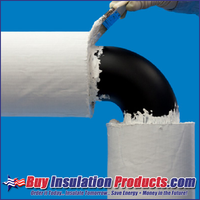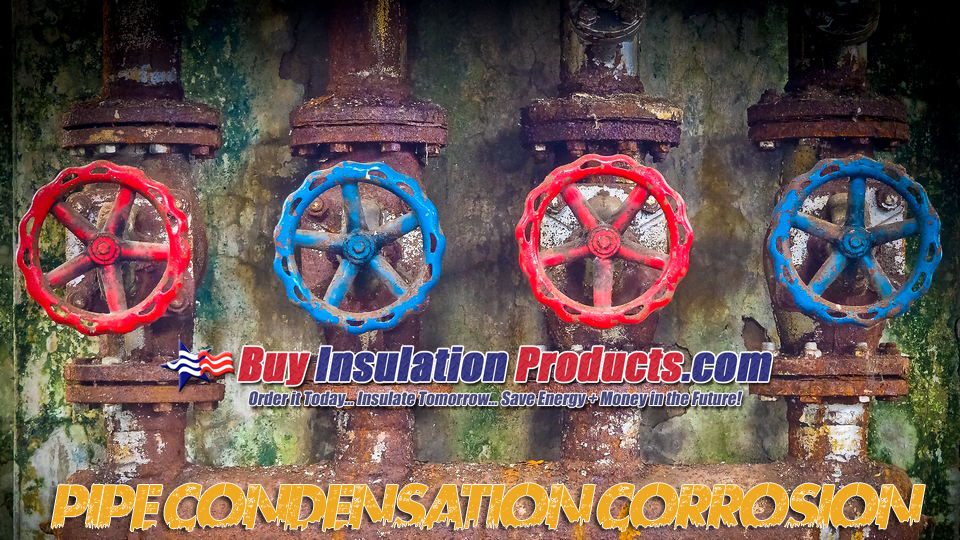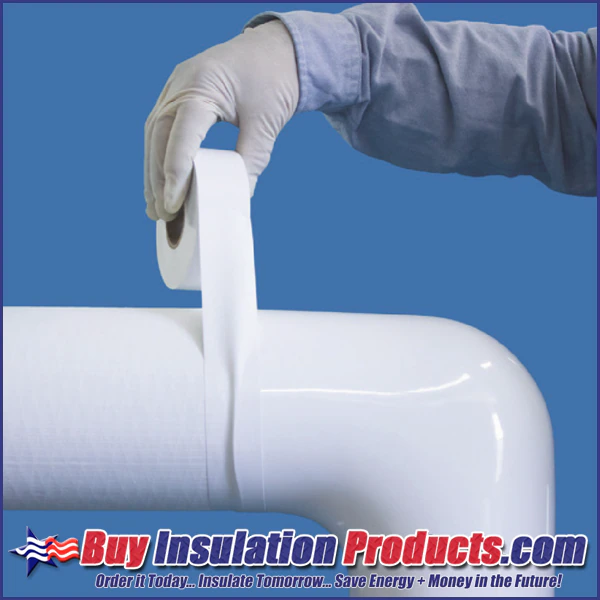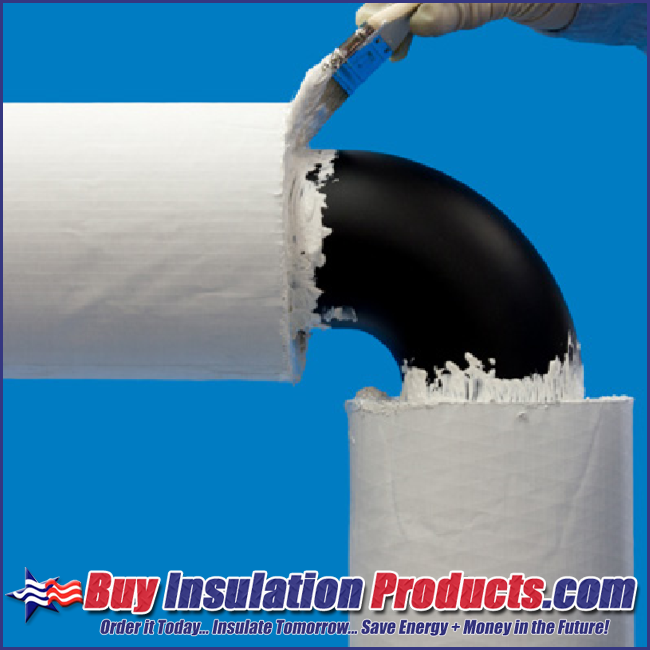Control Condensation with Condensate Pipe Insulation
Posted by BIP on 10th May 2021
One of the major reasons to add condensate pipe insulation to cold or chilled piping is to prevent condensation. Did you ever see a chilled liquid pipe line that is uninsulated in the summer? It looks like the pipe has sprung leaks at every turn and would have you repeating that common saying, "the pipe is sweating".
WHY IS PIPE CONDENSATION BAD?
So what? A little water on the pipe never caused any harm... Think again.
PIPE CORROSSION:
Condensation on metal piping caused corrosion to the exterior of the piping. The moisture on the pipe mixes with oxygen and electrons which results in premature corrosion and rust. The corrosion will eventually lead to leaks in the piping and pipe fittings.
MOLD GROWTH:
Moisture provides the lifeline for mold particles and spores to take growth on painted pipes, insulation, and just plain dust/dirt on piping. This mold growth may spread through contaminated droplets dripping off piping onto the floor, equipment, walls, etc.
SAFETY ISSUES:
Dripping water from pipes in the overhead can cause large puddles in work areas which will cause potential safety hazards. Employees may slip and fall due to the excess moisture buildup on slippery floor surfaces.
WATER DAMAGE:
The excess moisture of a "sweating pipe" will build up over time resulting in puddles on the floor, or damage to drywall, ceiling tiles, insulation, and flooring (in finished areas). When you see brown spots on the ceiling tiles of an office, if its not caused by a roofing leak, its most likely condensation caused by uninsulated piping or HVAC ductwork.
WHAT CAUSES A PIPE TO "SWEAT"?
"Pipe sweat", or condensation is simply formed when hot-humid air hits the cold bare surface of a cold pipe. Just like a glass of ice water will condensate on a hot summer day, pipe sweat is the same principle. The temperature of the pipe doesn't always have to be as cold as you may think. As long as the pipe is a temperature below the Dew Point Temperature the pipe will condensate.
DEW POINT TEMPERATURE
Dew point is the temperature at which the moisture in the air visibly forms into liquid or ice. If the surface temperature of an object falls below the dew point, water will form or “condense” on the surface of the object.
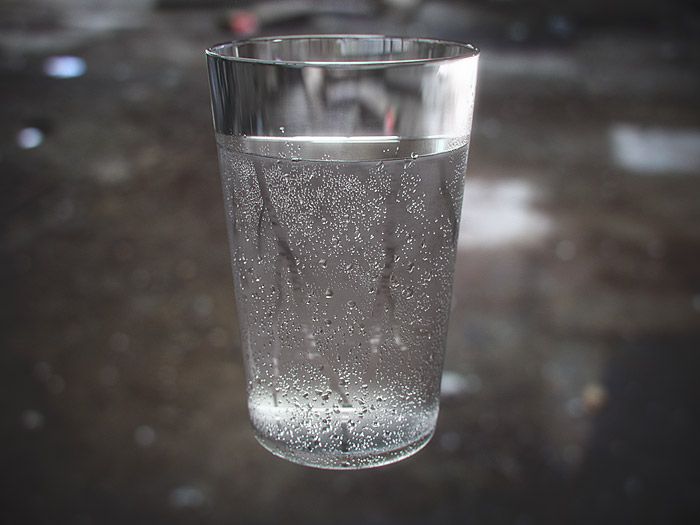
HOW TO CONTROL PIPE CONDENSATION WITH CONDENSATE PIPE INSULATION
PROPER WALL THICKNESS
When insulating a pipe that has known condensation issues, there are two major considerations. The first is to make sure the insulation thickness is sufficient to stop the development of condensation. A large misconception about insulation and the prevention of condensation is that any amount of insulation will work. This is not correct, as the surface temperature of the insulation itself may still fall below the DPT - Dew Point Temperature. The insulation wall thickness must be thick enough to increase the surface temperature above the Dew Point Temperature. The wall thickness calculation takes the following items into consideration:
- Operating Temperature of the Pipe Itself
- Ambient Air Temperature in Worst Case Scenario
- Ambient Relative Humidity (%)
- Wind Speed (if applicable in exterior applications)
*Please contact Buy Insulation Products for your DPT- Dew Point Temperature calculation and insulation thickness recommendation.
VAPOR BARRIER
Once you have the proper insulation wall thickness properly chosen, the next factor to consider is the Vapor Barrier (also referred to as a Moisture Barrier). The Vapor Barrier prevents water vapor, or basically humid air from infiltrating the insulation and making contact with the pipe itself. Maintaining a Vapor Barrier throughout the entire pipe insulation system is key to preventing condensation and insulation damage. Fiberglass Pipe Insulation comes with a pre-installed Vapor Barrier in the form of a white paper jacketing referred to as ASJ (All-Service Jacket). The ASJ jacket comes with an SSL (Self-Sealing Lap) which seals the vapor barrier at the 3ft seams. Buy Insulation Products provides "butt strips" which are 3" wide strips of tape which are applied over the butting joint of two sections of fiberglass pipe insulation. If sealed properly the vapor barrier will be maintained to prevent condensation. One of the largest problem areas is at pipe fittings (90°/45° elbows, tees etc.). The insulator must take extra precaution to seal the PVC fitting covers to the fiberglass pipe insulation. Sealing the joint between the PVC cover and the pipe insulation with PVC Vinyl Tape is imperative to stop air infiltration in the trouble area.
COMPARTMENTALIZING PIPE INSULATION TO REDUCE DAMAGE
When installing fiberglass pipe insulation on a pipe that is known or suspected of condensation, we highly recommend compartmentalizing the new insulation system into sections. Basically this means that we divide the pipe insulation into small sections to prevent damage of larger sections of insulation caused by condensation infiltration. We can accomplish this by sealing the edges of fiberglass pipe insulation with CP-11 mastic to make the edges of the sections water resistant. The sealing of fiberglass pipe insulation with mastic is essential at PVC fitting covers. Both sides of the fiberglass pipe insulation of a 90° elbow cover should be sealed with mastic to the pipe (see image below).

